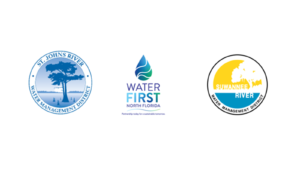The World’s Largest Ecosystem Restoration Effort Proves It’s Working
When I first started the Executive Director job at the South Florida Water Management District (District) more than four years ago, water had been in my veins for decades. But something seemed different about what was ahead. You may remember that in 2018 and 2019, Floridians were demanding more be done to protect and restore our water resources. And a newly elected Governor signed an executive order on his second day in office that marshaled momentum and resources into action for Florida’s environment. Talk about being in the right place, at the right time. I joined the District two months after this order was signed, and then realized how much pressure was on us to deliver.
For those of you who don’t know about the District, it was originally formed in 1949 to operate the world’s most complex flood control system (think canals, water control structures, pumps, impoundments, etc.) to protect communities from flooding when it rains and deliver water to communities when it doesn’t. Decades later, it also serves as the state sponsor of the state-federal South Florida Ecosystem Restoration Plan, often referred to as Everglades Restoration. But it is so much more.
The original flood control system worked very, very well to protect communities, but it had consequences. Not only did it severely impact the ecosystems that Florida wildlife depends upon, but it also shunted away all that water that we otherwise need during the dry season every winter. So, what is Everglades restoration really? It’s a retrofit of the old flood control system to manage water for South Florida more logically. Instead of losing water, keep it. Instead of smashing water into our ecosystems, deliver it at the right time, cleanly, and gently like mother nature would have. When you boil it down, it’s creating a more adaptable system that can better mitigate big storms and droughts. It’s resiliency.
If you follow the District’s social media channels, and you should, you will see that we hold A LOT of ribbon cuttings, groundbreakings, and ceremonies to recognize progress on this epic retrofit.
Each one of these pivotal moments will one day be memorialized in engineering and environmental textbooks across the country.

- The EAA Reservoir Project, a water storage reservoir larger than Manhattan, broke ground in early 2023 that captures enough water to fill Doak Campbell Stadium approximately 575 times.
- The U.S. Army Corps of Engineers finished constructing the C-44 Reservoir and Stormwater Treatment Area in November 2021 – the largest project completed to-date. This important project did its job to capture Hurricane Ian’s rainfall and prevent it from smashing into the Indian River Lagoon.
- The formerly channeled Kissimmee River was finally restored to a meandering river in 2021 creating 100,000 acres of restored floodplain habitat for migratory birds, bass, and a fantastic airboat ride.
- Four Public Private Partnerships: Brighton Valley, Bluefield Grove, Scott WaterFarm, and ALJO Four Corners Rapid Infiltration Project are complete and operational using more than 21,000 acres to capture enough water to fill Ben Hill GriffinStadium approximately 333 times over. (I’m a Georgia Tech alum so I am done with the Florida stadium references now.)
And that’s not all. We’re also in the initial planning and implementation phases of several more large-scale projects. By the end of my tenure, my goal is to have all storage features contained in the Restoration Plan either constructed or under construction. That’s meaningful resiliency. It means more water reliability for Lake Okeechobee and the Everglades, and for all the people and wildlife that depend on those water resources. It means more sustainable sport fishing for our coastal communities. It means a more sustainable and enjoyable South Florida.
But wait, there are new challenges. More than nine million people live in South Florida and all the businesses and public services that serve them depend on one thing – flood control systems that keep them dry, safe, and functional. The 1960s-era flood control consisting of thousands of individual components has two new challenges — it’s very old and depends on gravity.
First, the infrastructure built is largely beyond its designed longevity and must be replaced to continue to provide flood control. Each replacement costs between $20 million and $200 million, depending on whether it’s a culvert or a massive pump station. The number of structures that need critical replacement has increased tenfold over the past decade.
Second, coastal drainage structures are being throttled by sea level rise because water flows downhill. When the ocean water is higher than the inland water, which happens now, the rainwater can’t drain away. The sustainability of Southern Florida is now dependent on us adapting similarly to the Netherlands, adding pumps to move the water. Each of those retrofits can cost upwards of $200 million.
There’s much more to be done in ecosystem restoration and resiliency in South Florida. But I’m confident we’ll get it done. We are more focused and funded now than ever before. None of it would be possible without the incredible work of the staff at the District and the U.S. Army Corps of Engineers. These dedicated public servants work, day in and day out, because they believe in the mission. ●
Drew Bartlett is the Executive Director of the South Florida Water Management District.




















